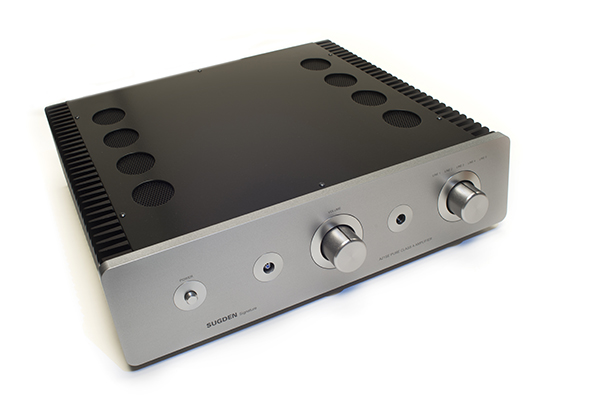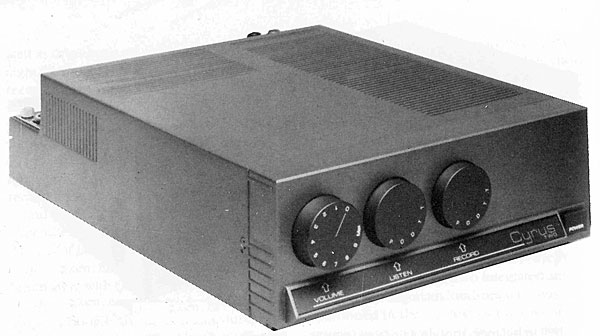Sugden has no introduction; everyone with even a passing interest in audiophilia is familiar with the A21 series of English amplifiers, which began with an 11 watt solid-state bipolar integrated amplifier in the mid-1960s. The A21a became a nineties benchmark; a specialist product that promised clarity at the expense of all else… It was produced over a period of time in three series of models, then the A21a went on to become a nineties benchmark; a specialist product that promised clarity at the expense of all else…
The pure Class A output stage with current feedback and a single voltage rail is a common thread that runs through all of Sugden’s A21 amplifiers. According to the manufacturer, the capability of this output design is only limited by the total amplifier’s previous gain stages. The SE adds remote volume control, relay switched input signals, and a completely new casing to the party, as well as enhanced output power, wider bandwidth, less distortion, and greater load tolerance. The novel line stage amplifier, which features a cascode input stage, current feedback, and input and output in phase, is stated to provide high input impedance, high voltage gain in its first stage, low distortion with wide bandwidth, low noise, and low output impedance. The line stages have their own current shunt power supply, which are powered by a separate transformer winding.
Many people have never heard genuine Class A functioning and assume it is ultra-smooth and ‘valve-like.’ It’s better explained in terms of what it isn’t rather than what it is. Most transistors are gritty, mushy, grey, sat-upon, tense, or frigid, and badly implemented (i.e. most) valves are soft, hazy, euphonic, colorful, and loose. Rather, pure Class A, and particularly Sugden’s application of it, exists in a wonderful ‘other universe’ of crystal-clear, sharp, and faultless amplification…
The intriguing thing is that, despite its lack of absolute power, it can move from extremely quiet to quite loud in a matter of seconds. The dynamics are incredible. The sound of a hard-hit snare pierces through the mix with startling clarity, fades away as quickly as it appeared, and then reappears on the following beat with the same visceral power – and, most crucially, Sugden ties it all together so expertly. Each four-bar phrase is well accentuated, propelling the music forward.
It’s a revelation Rhythmically and Dynamically, however there are other amplifiers that accomplish this wonderfully as well. However, I’ve never heard one with such clarity at this price (or anywhere close it). You can hear every every harmonic on Walter Becker’s analogue synthesiser’s squelch, every last resonance in Donald Fagen’s voicebox, since the A21SE is so neutral, self-effacing, and ‘glass clear.’ The midrange is amazing, but the bass and treble aren’t bad either. The former is super-fast, super-taut, and yet it just bounces along like a valve. It gives the tune a fantastic ‘naturalness’ that is completely understandable. Treble is also nice, but it’s not warm or sweet; instead, it’s neutral. The fizz, zing, imprecision, and haze are gone, replaced by what sounds like actual hi-hats being struck on a real drum kit in front of you. The detailing is disarming since it is so quick while remaining unobtrusive, undistorted, and non-invasive.
Downsides? Aside from a cheap-as-chips plastic remote control and the fact that the controls don’t move with a delightfully smooth, precise gait, I can’t think of many. The A21SE has the feel of a well-made hand-built kit, which it is, but it lacks the wonderfully silky tactility that owners of high-end Japanese food are accustomed to. There’s also the reality that, despite its useful power boost, the A21SE isn’t fond of difficult loads. This is a beautiful solid-state seducer when paired with a decent, easy-to-drive set of speakers like the Mission 752.








